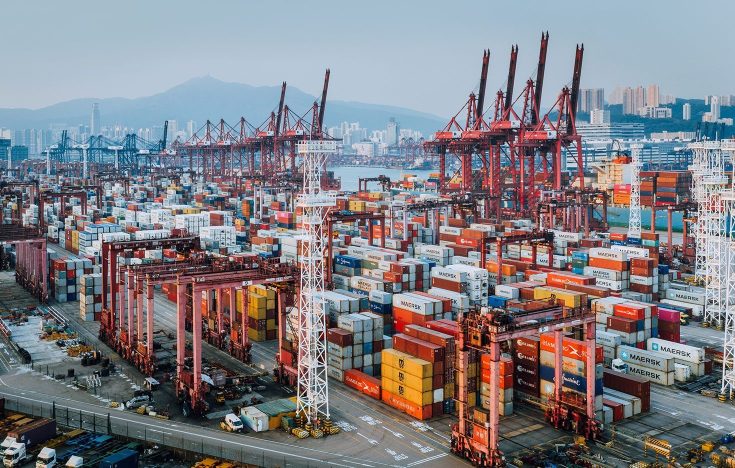Macro factors
China’s challenges exert a powerful influence on the economic outlook for the rest of Asia. Strict lockdowns have caused its economy to decouple from that of the US. Anne Chiou, Director, The Economist Intelligence Corporate Network explains: “The Chinese economy is facing significant downside risk. We think current challenges will shave more than 0.5% off GDP growth this year for China, to GDP growth of less than 5%.” The actual growth loss might even be larger.
With the multiple impacts brought by waves of Omicron outbreaks and then weak consumption, China’s growth could be in a comparatively slow pace than the years in the past decades. The situation is similar in the other parts of Asia.
Given the increase in commodities prices and supply chain disruption, many countries are evaluating their domestic consumption, energy dependency and export orientation. “There is potential for the recession to hit emerging markets, and we are seeing varying monetary policy decisions across the Asian markets,” added Chiou. She pointed out that although India recently made a surprise decision to increase rates, other markets including the Philippines and Thailand prefer holding off on interest rate hikes for now.
The Chinese economy is facing significant downside risk. We think current challenges will shave more than 0.5% off GDP growth this year for China, to GDP growth of less than 5%.
Anne Chiou, Director, The Economist Intelligence Corporate Network
“Some countries are analysing the success rates they’ve had in previous tightening cycles as a gauge for how successful they will be going forward,” she said. “Countries like Japan, for example, are still doubling down on ultra-loose monetary policy for now.”
China has also faced outflows of foreign capital since Russia’s invasion of Ukraine in February, causing government bond yields to rise and the renminbi to weaken. “This is making exports cheaper on the one hand, but imports more expensive,” commented Chiou. “Many MNCs are finding this difficult to manage.”
For many companies, it has become even more important to assess their operations in these markets, and understand the effects these monetary policies and the ripple effects in political stance in each country.
Supply chain challenges
As the epicentre of Asia’s trade flows, China’s lockdowns also have implications for the flow of goods throughout the region – the country accounts for more than half of all intra-regional trade.
Jacqueline Rong, Deputy Chief China Economist at BNP Paribas said, “before the Omicron wave, China’s supply chain remained robust as the country was experiencing a record growth in international trade in 2021, which enabled the country’s exporters to further increase their market share in global export markets,” said Rong at BNP Paribas.
However, the outbreak of Omicron led to unprecedented scale of lockdown and impacted production and logistics. At the worst time in the first half of April, road freight traffic dropped by as much as 30% nationwide and about 90% in Shanghai. The rest of the region – and the world – is feeling the effects.
“We are hearing from shipping and logistics companies in China that anywhere from 20% to 50% of cargo arrives on time,” explained Chiou. “That means that more than half of cargo arrives late – usually a delay of about two weeks stuck outside the terminals was normal.”
“About 60% of all Asia’s trade is intra-regional. China’s logistical challenges will definitely continue to impact the rest of the region,” She added.
Chiou pointed out that China accounts for about 40 to 50% of electrical circuits and electronics imports into Japan and Korea – but that these imports and the industries they support are under pressure. Events in China were also impacting supply chains in Vietnam, for example, because of reduced shipments of chemicals necessary for the textiles industry.
And the effects are persistent. Chiou has said their own expectation is for such logistical disruption to last for an extended period, until end of 2022 and potentially early 2023.
Reasons to be optimistic
Well before the current disruption, the pandemic drove many countries to try and reduce their reliance on imported goods and increase the resilience of their domestic economy. This trend has been reinforced by the war in Ukraine and the lockdowns in China.
Geopolitical tensions, and global concerns about Chinese lockdowns disrupting supply chains will take time to ease, but the experience over the past two years have taught businesses to be far more prepared to cope with any potential friction in their supply chains.
As the world moves into endemic, companies are staying cautious and implementing a just-in-case inventory strategy – through diversification of suppliers, increasing working capital to secure orders and inventory levels, etc. As Chiou added, “many clients of shipping companies have asked for a longer shipping contract to lock in a better pricing and ensure cargo space”.
While the aggressive series of rate hikes signalled by the Fed causes valid concerns of recession in the US, the effects may only be seen in 2023. “In the near term, we expect growth in the US will continue to stay robust, and that it will provide a tailwind for China’s exports to cushion the economic downside risk,” Rong explained.

In the near term, we expect growth in the US will continue to stay robust, and that it will provide a tailwind for China’s exports to cushion the economic downside risk.
Jacqueline Rong, Deputy Chief China Economist, BNP Paribas
There are reasons to be optimistic over the longer term as well, added Rong. “As the Covid situation eases in the country, China has also stepped up the implementation of existing stimulus programmes and is prepared to launch new ones.” The government unveiled a RMB 2.64 trillion tax and fiscal package, and a RMB 3.65 trillion quota for special local government bond issuance, to ramp up infrastructure investments. The Market 360 team at BNP Paribas expects the growth in infrastructure investments to reach the low-teens this year, and will act as a main policy lever to stimulate growth for 2022 and beyond.
Given China’s influence on regional and global trade, a softer landing there will be welcomed far beyond its borders.

